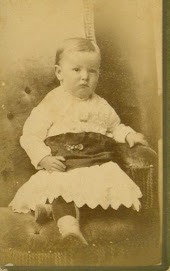The last post dealt with smelling; today’s with visualizing.
Make the Impossible Possible, by Bill Strickland, is a memoir of an inner city boy who succeeds when art gives him insights and experiences that eventually lead him out of his inner city environment. He returns to his hometown and former neighborhood and brings his talent and drive to encourage others. He develops an art studio which eventually turns into much more than that for his community and communities across the nation. He tells of the police in his neighborhood being suspicious of a group of guys who were Black Panthers and were hanging around his art studio. Bill invited one of the guys onto his porch to throw a pot on the pottery wheel.
He writes, “ The cop with the shotgun nodded and looked me over. I felt the Panthers watching, too, and the street toughs, and I felt all the weight of all the tension that filled Manchester in those days pressing down hard on me. But then I looked down at the kid sitting at the potter’s wheel. He was smiling, laughing, thinking about nothing but the clay. In that moment, none of the bad stuff could touch him; he was not afraid anymore, he want’s angry or confused, he was just a kid being happy.”
This is a good example of being able to visualize a scene. Can’t you just see the tension Bill describes? There is a cop with a shotgun and “street toughs,” both eyeing each other. One can see and feel the tension surrounding the kid sitting at the pottery wheel and at the same time feel the peace that puts him so far away from that tension. One can feel his contentment and see his joyful face. I am almost able to feel the clay. I certainly can visualize it, as it is what is keeping trouble away.
Write your scenes so that you can both feel and visualize what is happening.
Contrast the above with, “One day I was sitting on the porch when members of the Black Panthers started hanging around. Of course, police were suspicious and keeping an eye on them. I had invited one of them to try their hand at pottery and he enjoyed it, but there was still tension surrounding the scene.”
Help the reader visualize, by using strong visual words that paint a scene as well as by using emotions that contribute to the visualization.
Tuesday, March 30, 2010
Wednesday, March 10, 2010
Hugs of Peppermint
I recently watched a part of the old movie Parent Trap. The movie is about two sisters who didn't know each other or the divorced parent that they did not live with until meeting at camp. They decide to switch places to experience the parent they don't know. When they arrive home from camp, the one sister meets a Grandpa she doesn't know. She hugs him and doesn't move away after the hug. Instead, she smells his jacket and snuggles his coat. He wonders why she is hanging on so long and she tells him that she wants to save a memory; a memory of the way her Grandpa smells. He quips that it is peppermint and tobacco; peppermint for digestion and tobacco to aggravate Grandma.
This is a good example of showing, not telling. In writing this story, it would be less effective to say, "I remember my Grandpa always smelled of peppermint and tobacco." To show how it was experienced in a daily-way is more effective. The reader or viewer feels the emotional connection between the two. Grandpa's statement continues the story of why he smells of peppermint and tobacco. A hug experienced between two, turns into its own miniature story.
Subscribe to:
Comments (Atom)

